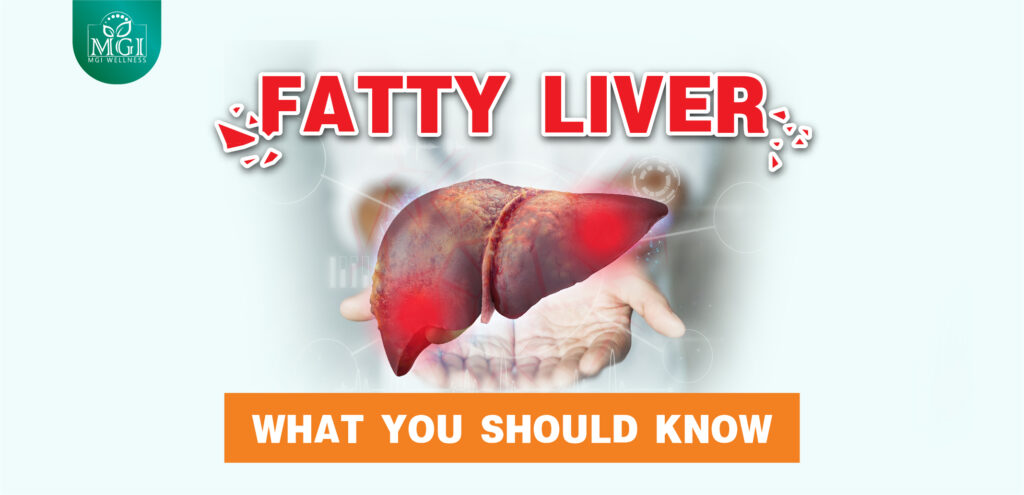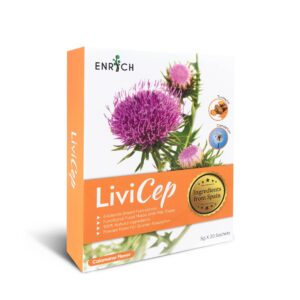Wellness
Fatty liver: What you should know
It is known that skin is the largest organ of the body however, do you know that the largest solid internal organ is the liver. It is a vital organ which carries out numerous roles in the human body.
Function of liver
Function of the liver can be summarised into 3 key functions:
Detoxification
- Excretion of bilirubin, cholesterol, hormones, and drugs
- Bile excretion
- Blood detoxification and purification
Synthesis
- Bile production
- Metabolism of fats, proteins, and carbohydrates
- Synthesis of plasma proteins, such as albumin, and clotting factors
Storage
- Storage of glycogen, vitamins, and minerals
The liver is able to be multifunctional due to the presence of liver enzymes: Alkaline phosphatase (ALP), Alanine transaminase (ALT), Aspartate transaminase (AST) and Gamma-glutamyl transferase (GGT). Liver enzymes are proteins that speed up chemical reactions in your body.
Apart from that, through a routine blood testing of the liver enzyme level you are able to determine your liver health as an elevated liver enzymes often indicate inflammation or damage to cells in the liver. The most common cause of elevated liver enzymes is fatty liver disease.
Types and causes of fatty liver
According to experts, fatty liver disease is quickly becoming a leading cause of liver cancer in Malaysia, which is the sixth most common cancer in the country. Fatty liver is a condition in which fat builds up in your liver. There are two main types of fatty liver:
-
Alcoholic fatty liver disease or alcoholic steatohepatitis
Alcoholic fatty liver disease is due to heavy alcohol consumption. Your liver breaks down most of the alcohol you drink, so it can be removed from your body. But the process of breaking it down can generate harmful substances. These substances can damage liver cells and promote inflammation.
-
Non-alcoholic fatty liver disease (NAFLD) or non-alcoholic steatohepatitis
NAFLD is a type of fatty liver disease that is not related to heavy alcohol consumption but is rather caused by a combined of several health problems such as obesity, insulin resistance, diabetes or dyslipidaemia which appears to promote the deposit of fat in the liver.
Progression of fatty liver
Fatty liver can progress through four stages:
-
Simple fatty liver
During this stage there is build-up of excess fat in the liver with no inflammation or scarring. For many people, simple fatty liver does not develop any further, and with a healthy diet and regular exercise, the excess fat in liver cells can be reduced.
-
Steatohepatitis
In this stage, the build-up of excess fat is accompanied with inflammation. Inflammation occurs when the liver is repairing damaged tissue.
-
Fibrosis
Persistent inflammation in the liver eventually causes scarring. However, the liver can still generally function normally.
-
Cirrhosis
This stage occurs when scarring of the liver has become widespread, impairing the liver’s ability to function. It is the most severe stage occurring after years of inflammation and is irreversible.
The hard scar tissue that replaces healthy liver tissue slows down the liver’s functioning. Eventually, it can block liver function entirely. This can lead to liver failure and liver cancer.
Symptoms of fatty liver
Sometimes people with the early stages of fatty liver may experience a dull or aching pain in the upper right side of your abdomen and fatigue. However, oftentimes fatty liver causes no noticeable symptoms during the early stages and you probably will not know you have it unless it’s diagnosed during tests carried out for another reason.
If the most severe stage, cirrhosis develops, you can get more severe symptoms, such as yellowing of the skin and the whites of the eyes (jaundice), itchy skin, swelling in the legs, ankles or feet (oedema), fluid accumulation in the abdomen (ascites), dark-coloured urine or pale stools.
Things you can do if you have fatty liver
-
Reduce or abstain from alcohol consumption
-
Lose weight
You should aim for a BMI of 18.5 to 24.9; losing more than 10% of your weight can remove some fat from the liver and improve fatty liver if you have it.
-
Eat a healthy diet
Try to have a balanced diet high in fruits, vegetables, good source of protein and whole grains, but low in fat, sugar and salt.
-
Regular exercises
Aim to do at least 150 minutes of moderate-intensity activity, such as walking or cycling, a week which can help you lose weight or reduce fat in the liver
References
- com. 2021. The liver: Structure, function, and disease. [online] Available at: <https://www.medicalnewstoday.com/articles/305075> [Accessed 13 December 2021].
- org. 2021. Liver: Anatomy and Functions. [online] Available at: <https://www.hopkinsmedicine.org/health/conditions-and-diseases/liver-anatomy-and-functions> [Accessed 13 December 2021].
- Corless, J., 1983. Normal liver function. A basis for understanding hepatic disease. Archives of Internal Medicine, 143(12), pp.2291-2294.
- Oh RC, Hustead TR, Ali SM, Pantsari MW. Mildly elevated liver transaminase levels: causes and evaluation. American family physician. 2017 Dec 1;96(11):709-15.
- Malik A, Cheah P-L, Hilmi In, Chan SP, Goh K-L. Non-alcoholic fatty liver disease in Malaysia: A demographic, anthropometric, metabolic and histological study. Journal of Digestive Diseases. 2007;8(1):58–64.
Health Food



Hey there! I just wish to give you a huge thumbs up for the excellent info you have got right here on this post. I’ll be returning to your website for more soon.
great info on fatty liver!
Really appreciate you sharing this article post.Thanks Again. Fantastic.
quality information People are bound to find this really important. I had no clue on some of the things you mentioned earlier, thanks!